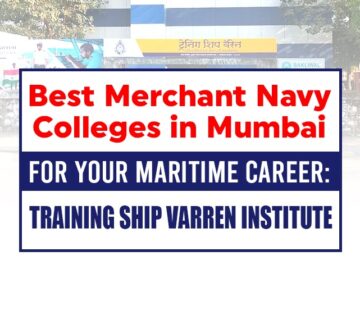The STCW (International Convention on Standards of Training, Certification, and Watchkeeping for Seafarers) has remained one of the major certifications for seagoing personnel in the maritime industry worldwide. The ability of the seafarer, as well as the ability of the individual to handle security functions, relies on the best stsdsd course in India (Security Training for Seafarers with Designated Security Duties). The guide informs on issues considered when deciding what training to take in order to give sea-goers relevant data that assists them in choosing the appropriate instruction based on career intentions.
Significance of STSDSD certification
According to the IMO’s ISPS code, STSD certification is currently compulsory on all ships. This implies developing a sophisticated security system that is likely to unearth security risks associated with ships and port objects.
Designated Security Duties Explained
One of the main objectives of STSDSD is to enable the seafarer to perform certain security functions within the ship plan. This involves detecting security problems, understanding security needs, and providing an adequate response in case of a security incident. A certificate of proficiency for seafarers is a big responsibility that concerns ship safety, its crew, and cargo.
The selection of the best STSDSD course
- International Recognition
To begin with, it should be ensured that STSTDS is internationally recognized first. Ensure that you follow courses that are recognized in India by the DGS but also approved by maritime regulatory bodies. This enables you to ensure that the training is in line with international standards, which go a long way in boosting your certification credibility.
- Compliance with IMO Standards
The STSDSD course should satisfy the guidelines of the IMO. As per the ISPS Code, the designated security tasks should be completely understood, and the curriculum must include all the mandatory aspects.
Course Content and Curriculum
- Comprehensive Coverage
A good STSDSD course has to furnish a complete educational program regarding the mentioned security responsibilities. It involves threat identification, safety, emergency response, and the practical application of security policies. It looks at the skills and knowledge about maritime law that a seafarer should have to handle any challenges they may face while they are on the sea.
- Practical Training Components
Find out the programs that provide practice, like simulation and practical work. Practical experience enhances the value of the training, and seafarers apply the theory in real-life situations.
Experienced and qualified instructors
- Maritime professionals as instructors
An institute is as good as the faculty of the institute. Ensure that the STSDSD course is delivered by experienced and skilled maritime officers proficient in maritime security measures. However, it goes further since these students, with their insight into real life, do a great deal to facilitate learning.
- Instructor-to-Student Ratio
How many classmates and instructors are there in a class? However, a small class with fewer students tends to support individualized care and ease in communication, hence facilitating learning.
Training facilities and infrastructure
- Simulators and Practical Training Areas
Efficient training requires modern infrastructure. Find institutions with simulators or training sites that create realistic onboard security situations. Furthermore, such an encounter becomes useful for a seafarer, as he is expected to undertake protection tasks.
- Classroom Facilities
The learning environment should have well-equipped classrooms fitted with modern teaching aids. Ensure the trainees have suitable equipment, comfort, and a technologically advanced environment for the delivery of the theory sessions.
Flexibility and convenience
- Course Scheduling Options
Regarding the course schedule, look at the flexibility. Consider enrolling in institutions that provide flexible schedules, such as weekend classes or online studies. This flexibility addresses the needs and schedules of possible seafarer individuals.
- Accessibility of Training Centers
Enroll in a training center offering a convenient, nearby STSDSD course. This facilitates convenience for participants in terms of travelling, as participants are able to concentrate on their training without undue stress related to travelling.
Course Duration and Intensity
- Adequate Duration for Comprehensive Learning
Although smaller programs may appear more convenient, make sure the length is adequate for a complete education. Maritime safety is highly dependent on designated security duties. Therefore, an efficiently paced and timed course allows for adequate understanding of the information by seafarers.
- Balancing intensity with learning objectives
How intense is a course relative to its learning objectives? It could be an intensive course for those with prior knowledge and a longer duration for some who want deeper knowledge.
Industry reputation and reviews
- Check reviews and testimonials
Find out about the maritime industry’s perception of the maritime training institute. Read previous reviews of the course for more information on its potency. The quality of this course is evidenced if positive feedback is received from industry professionals.
- Alumni Success Stories
Look at the examples of past graduates (alumni) from the institute who had successfully completed the STSDSD course. The alumni who applied the training in the real world prove the practical relevance of the course.
Cost and Value for Money
- Transparent Fee Structure
It should, however, not be the only consideration. Inquire about the institutions that charge fees for materials and training resources in a clear manner. The impact that hidden costs have on cost-effectiveness and value for money should be considered.
- Consider value for money
Assess the overall VFM. If the course provides outstanding training, qualified trainers, and appropriate facilities, a slightly higher initial price could be accepted.
Conclusion:
To conclude, the STSTDSD course is more than an accreditation; it is a passage towards securing maritime operations. Those are the seafarers who have delegated security roles assigned to them and who guard vessels, their crews, and their cargo. Time and care spent in selecting the most suitable STSD course in India helps a seafarer sail confidently and ably among the many seas of maritime security. The certificate also provides chances for different job opportunities and enhances collective safety in the maritime business. Safe voyages are laid by informed choice and competent seafarers.




